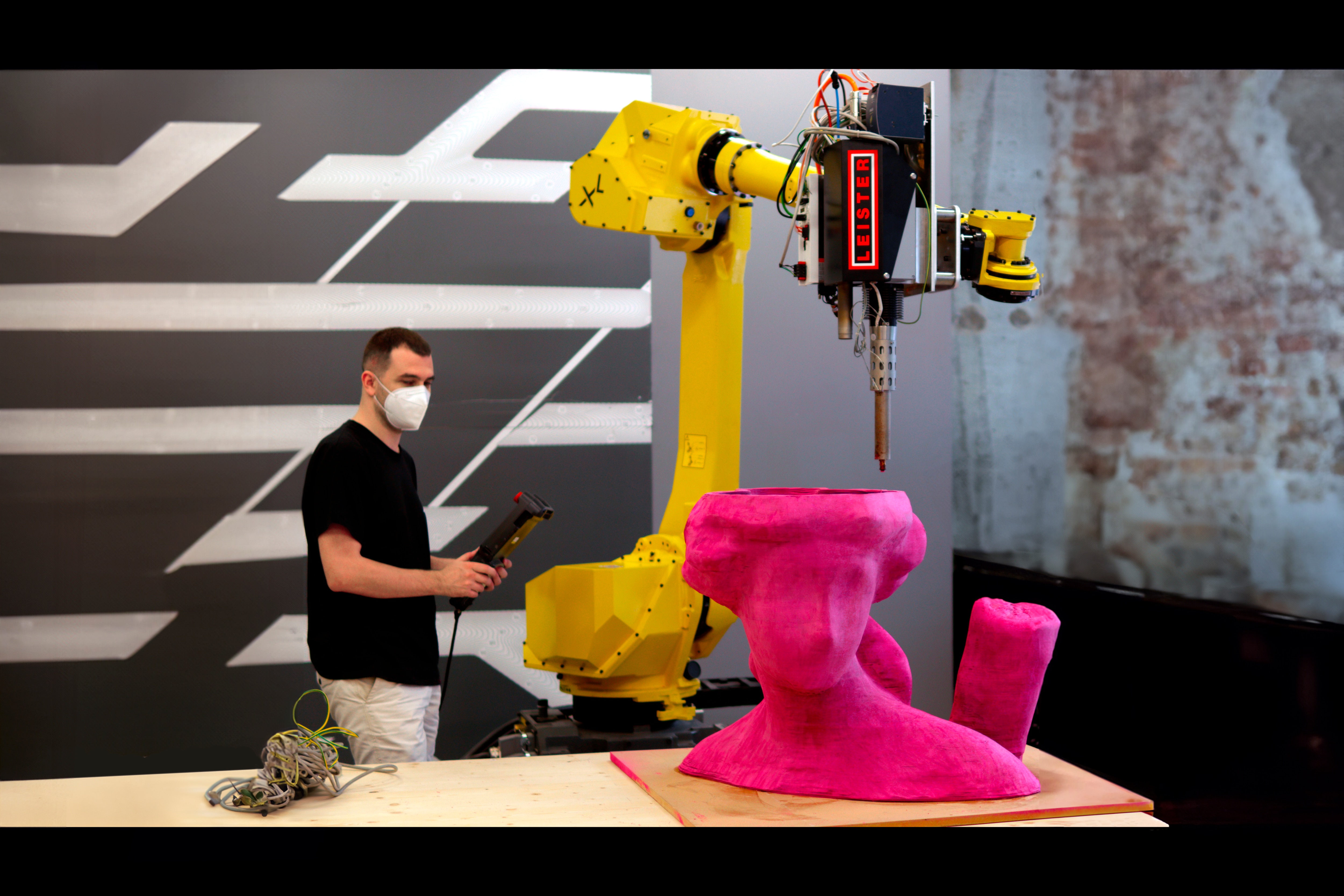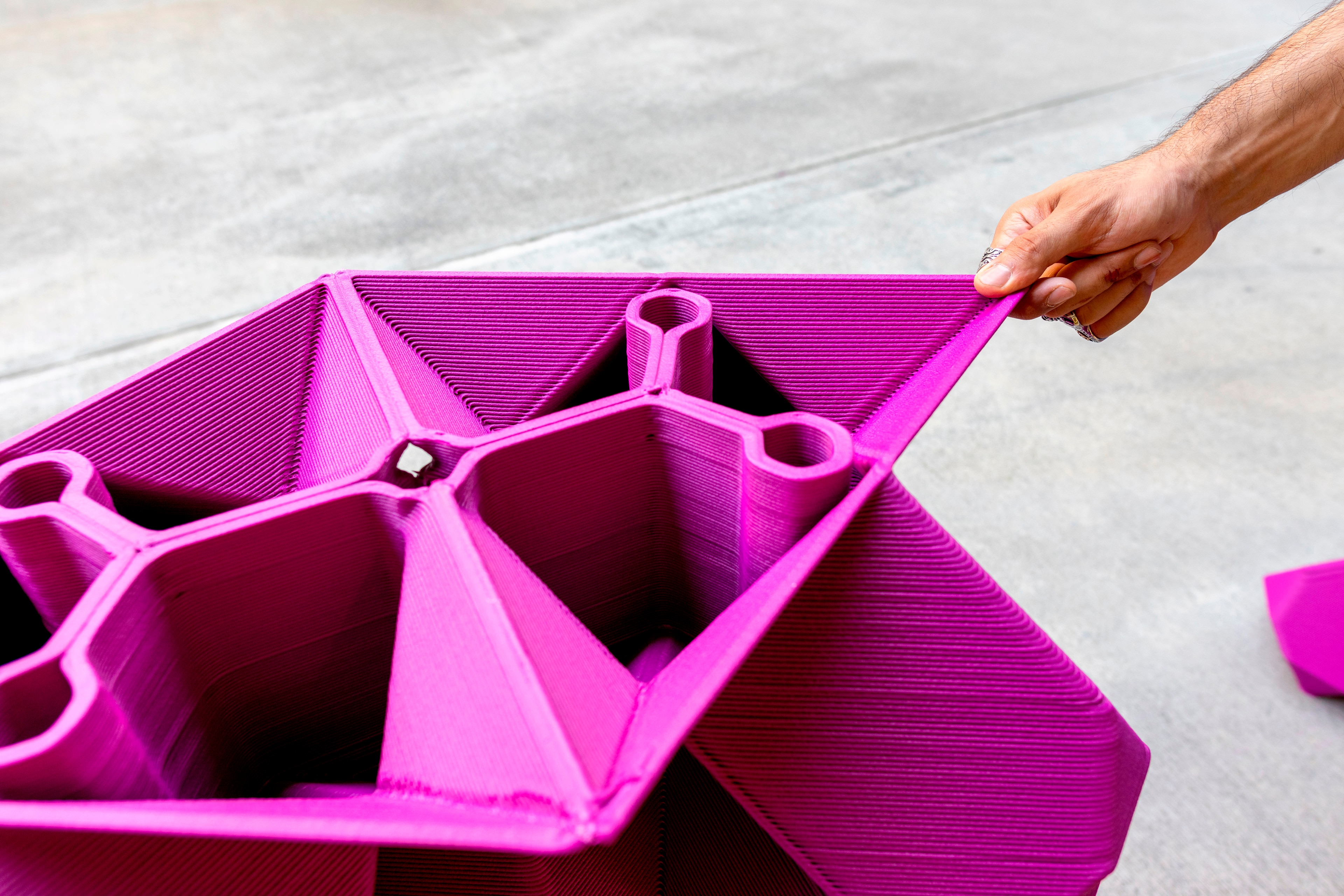Author: Mariateresa Pirozzi, Marketing Specialist, Leister Technologies AG, Italy
The synergy was born of an idea that matured within the “Cultura Meccanica” project of the Department of Mechanics at Milan Polytechnic. The goal was to develop knowledge and skills for creating and reproducing architectural elements in impressive dimensions. These elements were to be produced in a 3D printing process using the Leister WELDPLAST 600-i extruder.
Integration of the WELDPLAST 600-i into Fanuc Anthropomorphic Robots
The science side of the project was managed by Prof. Francesco Braghin, Department of Mechanics, and coordinated by engineer Pierpaolo Ruttico, Department of ABC. The work site was located in the INDEXLAB laboratory of the Territorial Center of Lecco under the operational direction of engineer Carlo Beltracchi with the support of engineer Gabriele Viscardi and computational designer Khalid Alabdula.
The core of the research was the development of techniques for integrating the Leister WELDPLAST 600-i extruder module into an anthropomorphic Fanuc robot. This is because the extruder, attached to the robot arm, was to produce exceptionally large plastic elements via 3D printing. These elements were designed as independent, easy to assemble blocks of a modular architectural system.
Careful Placement and Perfect Matching of Components
Polypropylene reinforced with glass fibers is completely recyclable and was developed and supplied by the Dutch company. With the integration of the extruder into the robot, the various components were carefully placed and perfectly matched. The WELDPLAST’s control computer, power supply and connections were installed directly on the robot's “wrist” to create a compact, functional and user-friendly plug-and-play system. This arrangement allows the maximum flexibility of the robot on several axes. It also significantly reduces the risk of cable tangling and possible interference due to the distance between components.
Control via PLC for Precise Control of the Extrusion Process
The system is controlled by a programmable logic controller (PLC). This ensures precise control of the extrusion process and is triggered when the critical temperature for extrusion of the selected material is reached. The WELDPLAST 600-i proved its worth here with its printing speed of 50 to 75 mm per second, allowing the extrusion of up to 3 kg of material per hour. The extrusion material was fed into the extruder in 2.5 kg coils of 4 mm in diameter.
Creating Elements with Free Forms, both Flowing and Broken
One of the most striking results of this project was to create elements with free forms, both flowing and broken. The ability to create structures with significant overhangs is a significant advance achieved through a specific cutting strategy. This cutting strategy, developed by engineer Carlo Beltracchi and computational designer Khalid Alabdula, made it possible to overcome the traditional limitations of 3D printing, increasing the range of possible shapes and pushing the boundaries of innovation in additive manufacturing.
“Virtù Principesche” by Luigi Vanvitelli, 3D Printed
The video demonstrates how the “Virtù Principesche” by Luigi Vanvitelli (Italian architect, born May 12, 1700 in Naples, died March 1, 1773 in Caserta) is realized using an innovative 3D printing process. To do this, the Department of Mechanics of Milan Polytechnic collaborated with the Milan-based art studio Cracking Art.


